How to Play Guitar
Learning how to play guitar is one of the most challenging things many of us ever try.
In fact, I used to think climbing Mount Everest in just your underwear might be a more enjoyable experience. In this post, I’ll share 15 powerful tips with you along with some very fun pieces of guitar music to play too!
You might even think hammering a nail with your beloved guitar might be easier than actually playing it.
If you’ve ever got yourself tied in knots with your low E string, or you’ve stopped and started learning guitar more times than a wind-up toy does its thing, this guide is for you.
I guarantee this guide will be like a “reset” button for your playing.
Instead of going through all the super basics of the guitar, such as how to read tab and the parts of a guitar, which have been written about extensively before…
In this guide, I’m going to dive straight into the essentials that 99.9% of guitarists miss.
That goes for if you’ve played for one week, one year, or one or two decades.
1 – Get a Guitar That Suits You
To ensure a smooth and enjoyable guitar-playing experience, it is essential to choose a guitar that suits you and have it properly set up.
Many people play guitars that are too big for them or that have a wide neck.
This makes stretching a pain. You must play a guitar that suits you. Everything becomes easier when you do.
It’s like driving a vehicle. You wouldn’t drive an army tank in a Nascar 500 race (actually that could be fun).
A good guitar is more comfortable to play, allows for easier fretboard navigation, can help make chord changes smoother, and will help reduce strain and discomfort, and potential injuries.
Plus, a good quality guitar will usually have a nicer tone and if you enjoy playing it, you’ll probably play it more passionately too (thus making it sound even better)
Action Plan
- Try out at least 10 different guitars in a shop. Find one that feels comfortable and natural in your hands. Pay attention to the neck shape, body size, and weight distribution. Experiment with different guitar sizes (full-size, 3/4, or Parlour) to see which one suits you best.
- Seek Expert Advice: Consult with knowledgeable professionals and store assistants. They can recommend suitable models and provide valuable insights. It’s far better to do this in person than online. That way you can hold and play the guitars. (Speaking of which, here is a good article on the subject of finding an ideal guitar from a fellow UK guitarist who has a cool shop).
- Professional Setup: Get your guitar professionally set up by a qualified guitar technician. They will adjust the action, truss rod, and intonation and also address any buzzing or playability issues, ensuring that your guitar performs optimally.
If you’re not quite happy with your guitar, you can still make good progress and the rest of this article will massively help…
…But get working towards getting yourself the ideal guitar for you. Continuing the driving analogy, getting the right guitar is like owning a wonderful sports car such as Lamborghini Diablo. Now the rest of this guide will teach you how to drive it smoothly.
2 – End the Curse of the “Death Grip”

The worst habit I’ve ever seen is the curse of the “Death Grip”.
Not many other guitar teachers EVER seem to help their students with this and that is shocking.
After teaching 1000s of students around the world and many more in my teaching studio, I’ve seen just how important this is many times.
I once even saw a student playing notes with so much pressure the veins were popping in his forehead.
I’m not even joking!
The fact is, you do NOT need a firm grip on the guitar, you do not need to press hard, and calluses are overrated.
To address this issue, I introduce the concept of “Minimum Pressure Required” (MPR).
The goal is to develop the habit of playing with the lightest possible pressure and that will make your guitar playing journey a much more pleasant experience.
Action Plan
Try this simple “Minimum Pressure Required” (MPR) exercise for playing with a light touch:
- Choose a note on any string to fret – let’s say fret 5 of the high E string, which is the thinnest string.
- Fret this note with your index finger – Pluck the note while simultaneously adding and removing pressure with your fretting hand finger.
- Aim for the sweet spot. The objective is to locate the point where it feels like you’re applying minimal pressure, yet the note sounds clear. Continue plucking until you reach this point.
- Repeat the process with all four fingers. Do the exercise again on all six strings at frets 1, 5, and 9.
- Practise this exercise daily – do this exercise until it becomes second nature and ensure you apply this concept to all your playing.
Remember, “MPR” is all about playing with minimum pressure. That will reduce finger soreness, prevent excessive calluses, and delay fatigue in your fingers. This enables you to practise for longer durations and achieve a higher standard of playing.
“MPR” can be an absolute game-changer for your playing. To see this technique in action, you can get my free super short and incredibly simple 21-minute Kickstarter course here.
3 – Learn Riffs and Melodies and Not Just Chords (How to Play Guitar the FUN Way)
Have you ever come across the following issue?
You’ve gone to a guitar teacher (in person or on YouTube) to learn something fun…
…but everything they teach uses chords, is brutally hard, and they’re all boring strumming songs?
This is one of the biggest issues I see with beginner students.
That’s because chords take ages to play clearly.
Getting reasonably fast chord changes takes ages (read up on tip #9 for more chord-changing tips)
…And strumming songs just aren’t all that fun to play unless you’re a singer.
So what’s the solution?
Learn to play some simple riffs and melodies.
Riffs and melodies are usually instantly recognisable, easier to play, and they will help you improve your finger dexterity quickly (which will actually help with your chords).
Action Plan
Learn a fun riff right now. This is one of the very first riffs/melodies I teach to beginners.
It’s a super simple fun blues bassline that anyone can play. Check out the tab and listen to the audio below.
If you can’t read TAB yet to play this piece, here is a guide.
- Pluck the low E string (the fattest string) – Pluck it as an open string and then at the 4th
- Now switch to the A string (the one next to the fattest string) – Pluck frets 2, 4, and 5.
- Now pluck the same notes in reverse.
The blues is super fun.
Get started with it today and eventually, you’ll be able to play all the blues you like. For more on the blues, check out Robert Johnson (Eric Clapton’s hero). Legend, has it he sold his soul to the devil to get good at the guitar.
The good news is to get decent at guitar, selling your soul is not needed. Just take your time and be patient. Start with this piece. It’s super fun and simple but sounds great.
4 – Aim to Join the 5-Song Club
Let me ask you an important question…
Can you play five songs yet?
The first big goal I give all students is to learn 5 songs from start to finish.
I call this the ‘5-Song Club’.
The idea is that you learn five songs from start to finish.
Working towards this goal will give you clarity and confidence.
Instead of practising lots of random techniques and ideas learnt from all over the internet, this five-song goal will give you a clear plan.
…And once you can play five songs, your chord changes, technique, rhythm, timing, and musicality will all improve. Songs are the glue that holds all these separate elements together.
The songs you learn can be very simple, and you don’t have to play them like Clapton. The “5-Song Club” is about motivation, fun, and a clear plan for your journey.
Action Plan
- Make a list of 20-30 songs you would love to learn – Spend a little time browsing to see how easy/hard these songs are to learn and whittle this list down to 5 songs
- Focus on one song at a time – I call this your “Primary song” and this is what you should focus mostly on when it comes to learning new songs (avoid trying to learn more than one song at a time for the best results).
- Have some variety – Your songs can be riffs, fingerpicking, strumming, or solo fingerstyle songs and aim to play at least two songs from memory.
- Play the songs to a good standard– The versions you play can be simple. You don’t have to play them to perfection, but you have to be happy with them. A good rule of thumb is if you would be happy for a loved one to hear them, then that’s good enough!
Once you achieve this five-song goal, you will get a sense of achievement, respect, and admiration from others – especially if you perform for them. Achieving this goal is something most guitarists sadly won’t ever do (that’s a sad fact as most give up), but I promise you, you can 100% do this. You’ll flourish once you achieve this goal, just like my students have done over the years.
…And if you want to join my students and get rewarded for achieving this goal, then check out the Dan Thorpe Acoustic Academy which is my primary place for teaching guitar and where I show you how to join the ‘5-song club’ in the easiest way possible.
5 – Tune Up Often (And Watch Out for This One Unusual Issue)
You must keep your guitar in tune.
It’s essential for sounding good and training your ear. We’ve all heard out-of-tune singers on American Idol or X-factor oblivious to the fact they sound like a strangled cat when singing.
Don’t be the guitar-playing equivalent of those crazy delusional folks. Your guitar goes out of tune more than you may realise. I was once filming a video tutorial for a course of mine and when editing the footage, I realised at one point for a brief few minutes one string was out of tune. It wasn’t the end of the world as the course sold 20,000 copies, but still, it bugged me for weeks knowing this.
Tuning your guitar regularly will improve your overall intonation, enable you to play along with other musicians, and ensure your practice sessions and performances sound as majestic as a pitched David Gilmour string bend.
Action Plan
Follow these steps to ensure your guitar is properly tuned:
- Buy a reliable tuner: Invest in a digital tuner, or a tuning app, or use an online tuner for accurate results. I like this one from Fender.
- Understand standard tuning: Familiarise yourself with the standard tuning of the guitar, which is E-A-D-G-B-E from the thickest to the thinnest string.
- Check each string is in tune every time you pick up your guitar. Start with the low E string and adjust the tuning peg until the string matches the desired pitch. Proceed to the A, D, G, B, and high E strings.
- Regularly check and re-tune: Keep in mind that guitars can go out of tune due to temperature changes, string tension, or playing.
- Listen for the intervals: Strum all the strings together and listen for a harmonious sound. If any strings sound off, revisit their tuning, and make corrections if needed.
- Be aware capos can pull strings out of tune – if you have a capo on your guitar and it is set too tightly, it may pull the notes out of tune.
Remember, having a well-tuned guitar enhances your experience of learning. It will ensure that your music sounds its best. Ignore this obvious tip at your peril.
6 – Embrace Classical Technique
I love classical guitar.
You probably should too.
Classical guitar tuition may sometimes be perceived as “stuffy” by casual learners.
…But it’s incredibly valuable because it teaches so many things that you just will not learn from most guitar teachers.
This includes lessons on precision, focus, and what I call “Core Fundamental Technique”.
In my opinion, the contemporary world of guitar tuition is very sloppy compared to classical tuition.
Many modern tutors prioritise teaching folk, rock, pop, Travis picking, and blues but often neglect good basic technique. This leads to sloppy playing and ineffective learning methods.
For years, my mission has been to bridge the gap between classical and contemporary guitar tuition, so you can play the songs and styles you love while playing them with great technique.
I encourage you to adopt the same approach, even if you don’t particularly enjoy classical music. By incorporating the best aspects of classical guitar tuition into your learning process, you can have fun mastering the songs and styles you love while making significant progress and playing with proper technique. Plus, there are some amazing classical pieces out there that make this style fun.
Action Plan
- Never shun classical technique— it will massively help you play EVERYTHING on the guitar to a higher standard, and truth be told, many classical players can wipe the floor with modern players in terms of technique and feel.
- Take the best of the classical world – Consider sitting with your guitar in the classical position (it can really help), practise with absolute focus, use pristine technique, and study classical guitar even for just a few weeks (it will open your eyes).
- Keep things fun and effective—learn the songs and styles you love but play them with classical-inspired technique and you will have a dynamite recipe for success
7 – Apply My #1 Rule of Learning
The first rule I give all students is this crucial one. The rule is:
“Have fun and improve one thing on the guitar every single day.”
Follow this rule and you will be guaranteed daily progress, get increased enjoyment, and have sustained motivation on the guitar journey. It may be simple, but its impact is huge.
By dedicating a small portion of your practice session to improving even the tiniest aspect of your playing and ensuring you have fun each day, you will propel your guitar skills forward in a positive manner. This rule not only prevents frustration but also enhances your overall playing experience and facilitates both short-term and long-term progress.
Action Plan
To put this rule into action, follow these steps:
- Choose one specific thing to improve daily: This could be a section of your “Primary song”, a challenging chord change, a technique, or any aspect of your playing that needs refinement. Dedicate 2-5 minutes each day to working on improving this specific area until you feel satisfied with your progress.
- Begin and end your practice session with something enjoyable: Start and finish your practice with an improvised jam, a simple melody, a fun riff, or a fingerpicking pattern that brings you joy. The piece of music doesn’t matter as long as you derive pleasure from it.
Remember to follow this rule every single day.
This rule is, in fact, the first rule of the Acoustic Asylum… which, in case you don’t know, is my tongue-in-cheek podcast that will help you improve your guitar playing.
In the podcast, I share a whole bunch of tips that will help you end your frustration and become the guitarist you want to be (plus it’s entertaining and in it, I share my love of comics, movies, and a little bit of dark humour), check it out here.
8 – Improve Your Sense of Rhythm Today! (How to Play With Groove!)
Developing a better sense of rhythm is one of the most important things you can do.
Many guitarists rush their songs like they’re the Tasmanian Devil, desperate to catch the 11 pm train home after a Bruce Springsteen gig.
It’s key to be able to play everything using a steady tempo. If you don’t, your playing will sound disjointed and awkward. Plus, as you improve and start becoming an intermediate guitarist, you will want to start mixing and matching rhythms a little more. At that point, maintaining a steady rhythm becomes even more essential.
Action Plan
Here’s an action plan to help you improve your timing:
- Tap your foot or clap your hands: Use your body as a natural metronome. This will help internalise the rhythm and improve your timing. Choose one piece of music to begin with and apply this idea to that piece religiously.
- Use a metronome – spend 2-3 minutes per day with a metronome set to around 60 bpm. Just pluck one note in time with each click. This is ideal for beginners, but even more experienced players should do this too.
- Play with recordings: Practise playing along with recordings of songs or backing tracks. This will help you develop a sense of playing in time with other musicians and improve your ability to maintain a consistent groove.
- Jam with others: Playing with other musicians is a great way to improve your timing and rhythm. Join jam sessions, play with a band, or find opportunities to collaborate with fellow guitarists. It will challenge you to stay in sync and adapt to different musical contexts.
Remember, developing a sense of timing takes time and effort. Be patient with yourself. With consistent practice and a focus on rhythm, you’ll notice significant improvements in your timing and overall musicality.
9 – The Magic 5000 for Faster Chord Changes
Getting fast and smooth chord changes can be brutal.
Seeing your fingers stutter and trip up over each other like three of your drunk uncles on Christmas day evening can be painful. Improving them can require monk-like patience.
To address this, I always emphasise the following point to my students:
“It typically takes around 5000 attempts of changing between two chords using good technique before you can consistently execute the change.”
Is that an exact number?
Nope, but this number is probably in the ballpark and it serves as motivation for students to continue practising. Each attempt will bring you closer to mastering a specific chord change.
5000 chord changes might seem like a lot but:
- You may be able to do 10 chord changes per minute.
- If you do that for 10 minutes per day, that will equal 100.
- And in 10 days that will be 1000 chord changes already!
Remember, chord changes are about the long game.
The key is to practise your chord changes with precision and focus. That is something many guitarists do not do and they regret it later on.
Action Plan
- Start with just two chords to change between (e.g. G and Em). Set a timer and go back and forth between the chords slowly and precisely.
- If you can “pivot” a finger, do so – pivoting is where you can leave one finger in place for both chords. (For the G to Em change, you can leave the index finger on fret 2 of the A string throughout).
- Move your fingers at the same time. Try to avoid the habit of landing the fingers one at a time. This is a hard habit to break.
Check out this guide to find more examples of the ‘Pivot’ method and to improve your chord changes.
Sadly, slow chord changes are one of the reasons why most guitarists give up the guitar. Don’t be that guitarist. Don’t let them beat you. Instead, be ultra-focused, and remember there is more to playing the guitar than just chords (as you will keep discovering in this article)…
10 – Bite-size Chunks – (How to play “House of the Rising Sun”)
Learning in bite-sized chunks is one of the secret weapons for learning guitar faster.
Many guitarists fall into the trap of trying to tackle large sections of songs all at once, which often leads to frustration and forgetfulness. It’s crucial to avoid getting greedy and overwhelming yourself with too much information.
Picture this scenario which you may have experienced before… You start learning a few notes of a song and feel confident. Then, instead of pausing to solidify what you’ve learned, you give in to the temptation of adding a few more notes. The outcome? You end up forgetting the initial notes you were once confident about. Ouch!
This common experience can leave you feeling hopeless and frustrated. However, there is a solution: learning in very small chunks.
Notice how it is simple, with a big focus on the melody and some simple bass notes to fill out the sound.
Still, be patient, take your time and follow all the other tips in this guide on being patient, learning in bite-size chunks, and playing with precision. No songs are easy on the guitar – at least not until you can play them. Enjoy, this is a lot of fun to play.
11 – Enjoy the Elegant Brilliance of Fingerpicking
Fingerpicking guitar is so much fun.
It’s truly a captivating and enchanting style of playing that unleashes a unique and beautiful sound from the instrument.
By using your fingers to pluck the strings individually, you can create intricate melodies, harmonies, and rhythms that capture the hearts of anyone listening to you play. This technique allows for greater control and expression, enabling you to emphasise specific notes or strings and add nuance and dynamics to your playing.
Throughout history, influential fingerpickers have left a lasting impact on the genre and inspired generations of musicians. Legendary artists as diverse as Mississippi John Hurt, Merle Travis, James Taylor, and more recently Tommy Emmanuel, have all done wonderful things while fingerpicking.
Getting to this point takes time, though, so start off simple. A simple little fingerpicking pattern such as the one below is a great place to begin.
Action Plan
Start with a basic fingerpicking pattern such as this one.
Here are some tips on playing it:
- Pluck the low E string with the thumb
- G string – index finger
- B string – middle finger
- High E string – ring finger
Bar 1 is very simple and bar 2 is where we create some melodies using this pattern.
Later, you can experiment with Travis picking or alternating bass patterns. For now, focus on accuracy and timing, gradually increasing your speed as you become comfortable with each pattern.
For now, embrace the magic of fingerpicking and let your fingers dance across the strings, unlocking a world of musical expression and creativity, and if you want further help fingerpicking, you might want to check out my popular book which you can get on Amazon.
12 – Play Every Note With Precision
How to play the guitar with precision. This is something that is not really talked about enough on the guitar.
…But if you’re a beginner, you must absolutely focus on clean playing and eliminating excess string noise.
The pros all spent years (and still do) perfecting the basics. It’s like Michael Jordon practising basketball. Legend has it that he would do 1000 drills of the core fundamentals every single day. Things like throwing free throws, dribbling, etc. As guitarists, we must do the same.
Use proper muting techniques with both hands to achieve a clear and articulate sound. Learn to mute unwanted strings with your fretting hand by lightly touching them to prevent them from ringing out. Use your picking hand to control the dynamics and mute strings that shouldn’t be played.
Practise playing cleanly by starting slowly and gradually increasing the speed while maintaining accuracy.
Clean playing will enhance your overall sound quality, make your playing more professional, and improve your ability to execute intricate passages.
Action Plan
Here are a few examples of what you can do:
- Get the five essential chords of G C D Em Am crystal clear. Pick the notes from each chord and ensure every note sounds clear.
- Choose two random notes on the fretboard that are fairly close to each other (e.g. Frets 5 and 7) and perfect the transition between these two notes so there is no silence.
- Strum one simple chord over and over until the strumming sounds smooth, rhythmic, and pleasant to listen to.
Those are just some simple ideas. You can use the ideas above for everything you play and please do. You won’t regret spending time on the fine details!
13 – Use That Recorder on Your Nifty Little Smartphone
Put on your best black tie or dress because it’s time to be a movie star.
I’m kidding, of course, but here we are talking about the importance of recording yourself playing. This is key, as it will help you assess your progress and identify areas for improvement.
Action Plan
- Set up a simple recording device – place your smartphone on a tripod to capture your playing.
- Regularly listen back to your recordings with a critical ear – focus on aspects like timing, technique, tone, and dynamics.
- Take note of areas that need improvement – compare recordings over time to track your progress. Seeing how far you’ve progressed is super motivating!
You might not win an Oscar for your acting skills but recording yourself not only helps you identify weaknesses, it also allows you to celebrate your achievements and milestones.
14 – Improve Your Finger Dexterity (And Here’s My Favourite Exercise for Doing So)
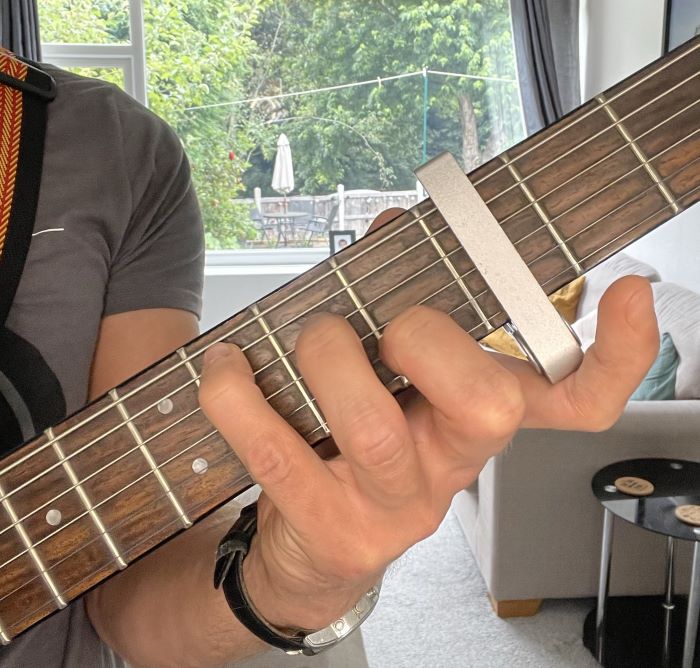
A lot of people focus on complex warm-ups with exercises like chromatic runs, finger stretching, and alternate picking drills.
Hmm, those can be useful but if you do them badly, they can become bad habits.
Instead, here’s a super simple little exercise you can do daily.
Action Plan
Play the ‘Bindex’ exercise.
- Choose a chord and play it without using your index finger – let’s take Am as an example. Basically, you play it with your middle, ring, and pinkie fingers.
- Practise this chord 10 times in a row – add and remove your fingers in between repetitions
- Use a capo if you need to – placing a capo on fret 5 will allow you to play your chords easier and it makes the stretch a little less brutal.
Note: I call it the “Bindex” exercise as I’m English and we call a “trash” can a bin, and effectively we are putting the index finger in the bin (well, not really, but you get what I mean).
Try the exercise for 10 reps per day on one chord. As you get better and better at it, you can try it with more chords. Go slowly, this exercise will really help your finger dexterity. It also has the added benefit of even helping your finger independence for barre chords later on.
15 – The Forgetting Curve
Discovered by Hermann Ebbinghaus in the 19th century, the “Forgetting Curve” phenomenon shows how badly our brains can sometimes work.
Ebbinghaus discovered that when tested, we can immediately recall something we are learning with 100% accuracy if tested on it right away…
…But after just 20 minutes, our recall drops to 58%!
It then decreases to just 34% after 24 hours.
While we are not as bad as goldfish, humans are inherently forgetful creatures.
However, there is a way to combat this phenomenon and improve our ability to remember: consistent recall.
Action Plan
- Break up your main practice session – keep revisiting the piece of music you are learning throughout your session. Play it for a while, practise something else and then practise this piece again. Each “reset” will help the information sink into your grey matter some more.
- Do mini practice sessions – instead of practising your guitar and then leaving it untouched until the next day, try to pick up the guitar multiple times a day, even if only for a minute or two, and play the notes or chords again. Again, this helps it sink in better.
- Play the music in your mind – If you don’t have access to your guitar, you can mentally play the notes or go through the movements in your mind. This consistent recall will help solidify the information in your memory. I’ve done this in bed quite a few times (but then again, I’m a “saddo”!)
Putting it All Together
How to Play Guitar With 2 Simple Daily Action Plans
Okay, so now let’s put what you’ve learnt so far in this guide together for a daily practice routine.
A good daily practice routine can be like dynamite for your playing and can help explode your growth over the upcoming weeks and months so that you can be the guitarist you want to be.
Your daily routine should target the specific areas you want to improve. Aim for a balance between technique, core skills, rhythm, dexterity, ear training, theory, improvisation, and learning songs.
All of this is essential for well-rounded growth as a guitarist. If you can, create a schedule or practice log to track your progress and ensure you’re covering all the necessary elements.
Feel free to customise this practice routine to suit your desires and needs and you can adapt it over time.
This will optimise your learning, prevent stagnation, and keep your guitar journey exciting and engaging.
Action Plan
Try either of these daily routines and feel free to alternate them on different days.
For example, on Monday you can play routine A, Tuesday routine B, Wednesday, routine A, etc.
These two little daily routines will help you practise everything you’ve learnt in this guide. You can make great progress in one short and sweet routine that takes less time to watch than a couple of random YouTube cat videos…
Routine A
- 1m – Do the “MPR” exercise – remember this will help end your Death Grip (see tip #2)
- 1m – Metronome practice – set a click to 60 bpm. Start by plucking one note over and over in time with the click. Later you can practise full scales with the beat.
- 2m – Bite sizing – take a segment of a song you are learning and perfect it (i.e., just one or two bars).
- 1m – Chord changes – practise switching between the G and Em chords (try to do 10 changes per minute)
- 1m – Have fun playing riffs – the blues riff from tip #3 is a great place to start but play any riff you like. Riffs help loosen up fingers and are fun.
- 1m – Improvise – try to create a catchy melody using the A minor pentatonic scale. Keep it simple and try to create something that sounds musical.
- 5m – Practise your “Primary song”
Routine B
- 1m – Do the “MPR” exercise – remember this will help end your Death Grip (see tip #2)
- 1m – Play a fingerpicking pattern over one chord. This will help loosen up and warm up the picking hand while playing some pretty music.
- 1m- Do the “Bindex” exercise. Choose 1-2 chords and play them using this powerful little exercise, ensure you are precise when you do so.
- 1m – Strumming and foot tapping – play a chord such as G Major and play it over and over with a strumming pattern from tip #16 while tapping your foot to the beat.
- 2m – Record yourself playing a song – choose a song from your five-song choice (tip #4). Watch the recording back at the end of your session and make notes on what was good and what could be improved.
- 1m – Train your ears – plucking a random note on the fretboard and singing that note
- 5m – Practise your “Primary song”
After you’ve done the daily routine of your choice, you can then go and practise what you like. You can either jam or have fun playing songs you can already play. You can repeat the routine or keep working on your “Primary song”.
The choice is yours, but ensure you do one of the above routines each day!
Notice how both routines begin with the MPR exercise (yes, it’s that important). Also, remember to practise your main song that you are looking to perfect throughout the day where you can too.
…And if you like, you can join my email list here. It’s free to join and your email will never be shared. I’ll send you daily powerful emails that will take what you learn in this guide and put it into overdrive. 14,000 subscribers love those emails and IF you enjoyed this guide, I’M confident you will too.
Final Thoughts
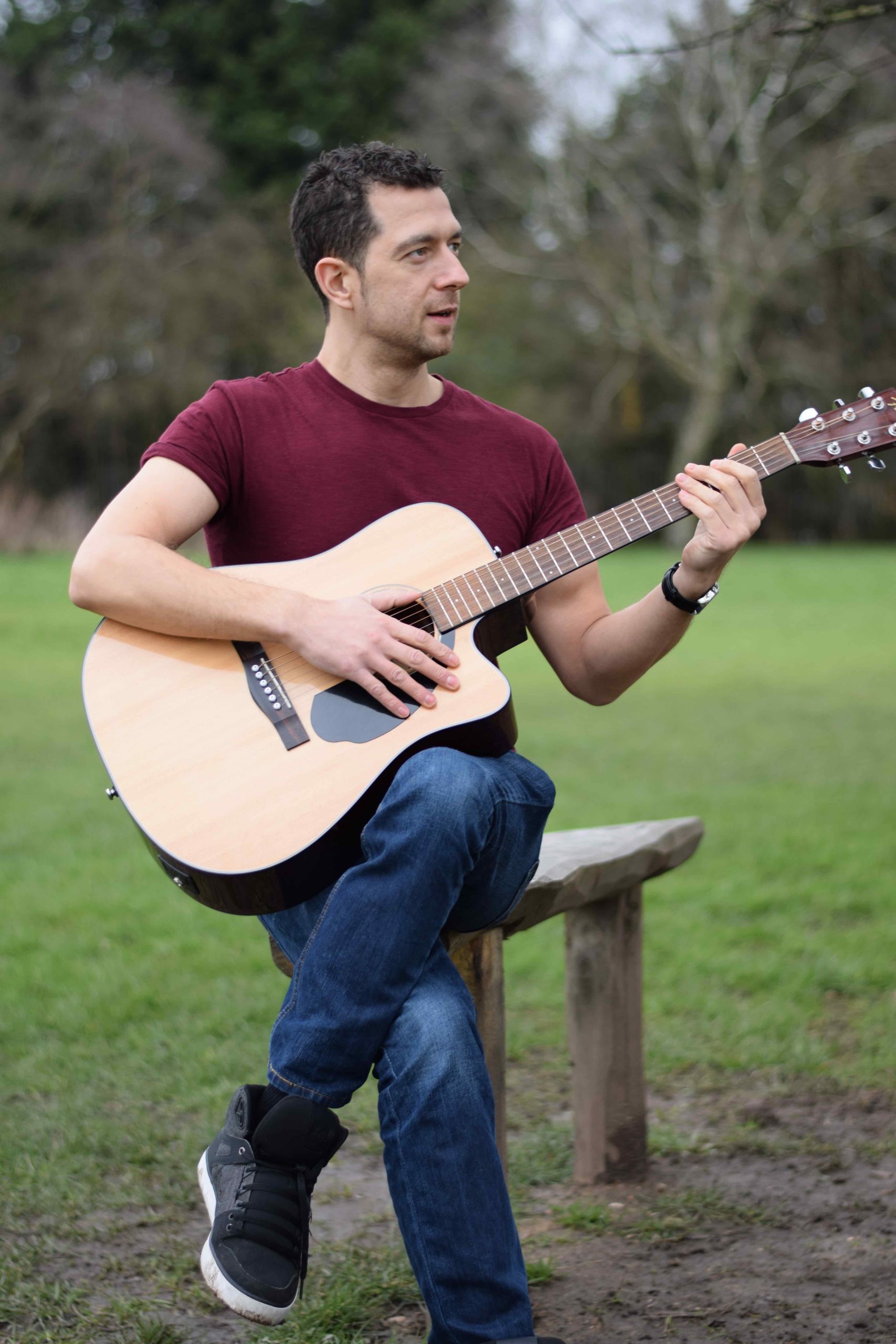
Remember to have fun.
Enjoy the process of how to play the guitar. Music is a creative and joyful pursuit, and the guitar offers a means of self-expression and personal fulfilment.
Embrace the pleasure of strumming chords, discovering new songs, and creating your own music.
Celebrate your accomplishments, no matter how small, and find opportunities to share your playing with others. Cultivate a sense of curiosity and playfulness in your guitar journey. Let the instrument become a source of inspiration, relaxation, and pure enjoyment in your life.
Also, here’s a bonus tip. Listen to a wide variety of music and try to replicate the guitar sounds you hear. Active listening is an excellent way to develop your ear and improve your musicality. Pick out melodies, chords, and solos by ear and try to play them on your guitar. This exercise trains your ability to recognise musical intervals and improves your overall ear-to-hand coordination.
Explore different genres of music to broaden your playing style. The guitar is versatile and can be used in various musical contexts. Experiment with blues, rock, jazz, folk, classical, and other genres to expose yourself to different playing techniques and musical expressions. Analyse the characteristics of each genre and study the guitarists who pioneered them. Try to incorporate their stylistic elements into your own playing. This exploration will enrich your musical vocabulary and help you develop a unique voice on the guitar.
Learning the guitar is one of the most wonderful things I’ve ever done. I hope you enjoyed this guide and thanks for reading. Please do leave a comment below.
I love to read them all!
Right, I’m off to go have a jam, chocolate pudding, and lie down…
Never forget this bit of wisdom someone once said to me – those that never give up on the guitar, succeed!
I’m rooting for you!
Dan Thorpe

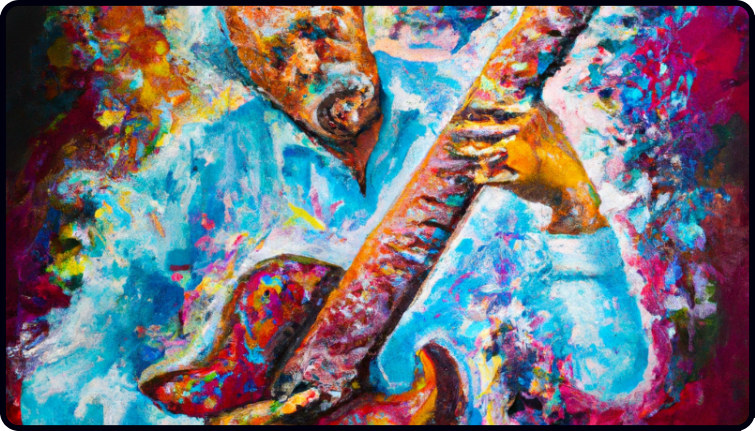








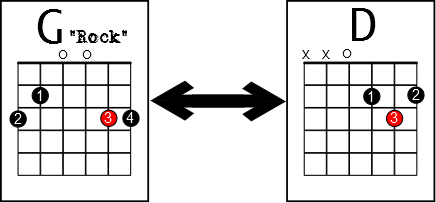

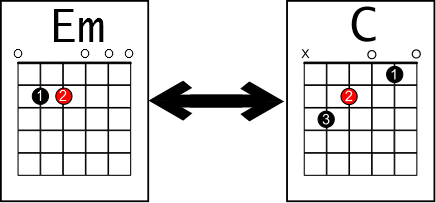




Thanks. Makes good sense.
Thanks, Dennis 🙂
Ty I really enjoyed the read.i am 61 been playing off and on ready to get serious about learning guitar I will put things you have included on here and do you have a learning guitar book anyway have a great day and happy playing..
Cheers, Robert. Much appreciate the comment and pleased you found this helpful. Yes, I have an inexpensive book which is mostly focused on fingerpicking, but will help with all your playing (i.e. good technique, good learning habits, etc) and which you can find out more about HERE. Happy playing! 🙂
I wish I’d read this article way back when I first started playing. By now I’ve finally incorporated most of these into my playing, but if I’d known about them early on I would have learned so much faster!
Hi Dan, I’m really excited that you created this introduction guide. It’s been a couple of years since I picked up the guitar and worked with your Fingerstyle 101 book, but I’m ready to get back into it. So thank you very much for putting this very thorough list together and I’m going to start at the top and not give up this time.
Amazing post! I love how you break down each section in the guide into a specific “Action Plan”. That’s super helpful.
I do have a question about section 8, which discusses improving your sense of rhythm. Do you recommend that new students start practicing along to a metronome right away, or do you think they should get the initial feel for the guitar part they are learning first before introducing the metronome later to tighten up their rhythm? I’ve had this debate with many guitar teachers before and I’m curious where you stand on this question.
Thanks!
Thanks, Phil. Ideally all new students would be okay using a metronome right away but it can be tough as there are many things for them to work on. I usually introduce it in the first few months at the latest and when teaching it we use one in a very, very simple way (playing one note per bar to begin with), and then try to get them using one at least 5 days per week ideally. 🙂
Thanks, Dan! Great advice.